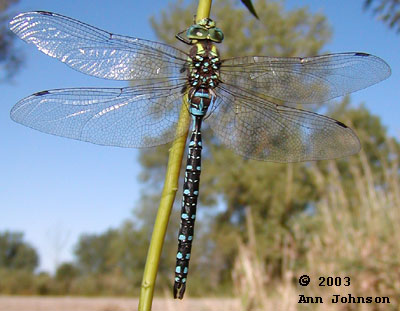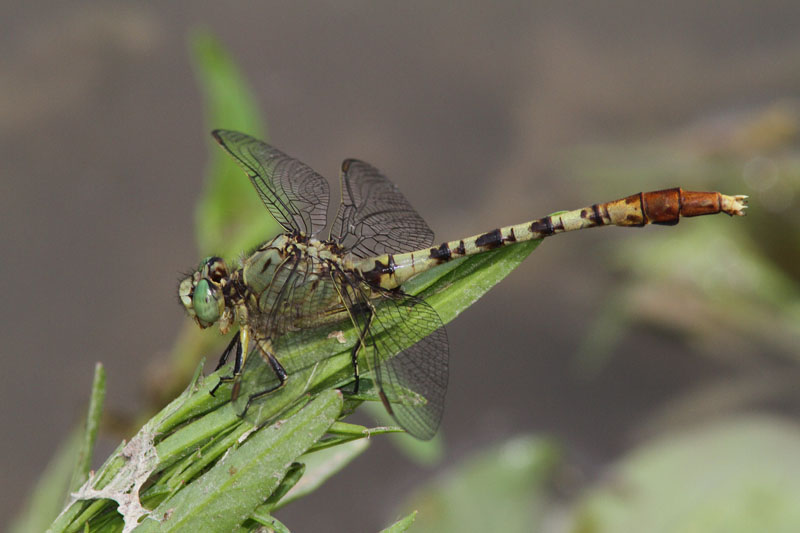- Dragonflies
- Suborder Anisoptera
- Darners
- Aeshnidae Family
- Clubtails
- Gomphidae Family
- Cruisers
- Macromiidae Family
- Emeralds
- Corduliidae Family
- Skimmers
- Libellulidae Family
Links to Other Sites:
- OdonataCentral
- Iowa Odonata Survey
Dragonflies are among the largest and most colorful of all insects. They are easy to find and observe and are active during the day. They are amazing flyers, having the ability to move each of their four wings independently. They can both hover and fly backwards. They exhibit complex behavior, including courtship displays, aggressive chases and fights. Despite their aggressive behavior, they are not harmful to humans. They do, however, consume large quantities of mosquitoes, flies and other insects, including other dragonflies and damselflies.

Lance-tipped Darner

Jade Clubtail. Photo courtesy of Terry Hibbitts.
They cannot hear, but they have huge eyes, which may be widely separated (Clubtails) or touching. They hold their wings out flat when at rest, in contrast to most damselflies, which hold theirs folded above their abdomens. They spend 1 to 3 years under water in the larval stage and only a few months as flying adults. A few species such as the Common Green Darner migrate. They have survived for millions of years, and there are fossil records from 300 million years ago of dragonflies with wingspans of over 2 feet.